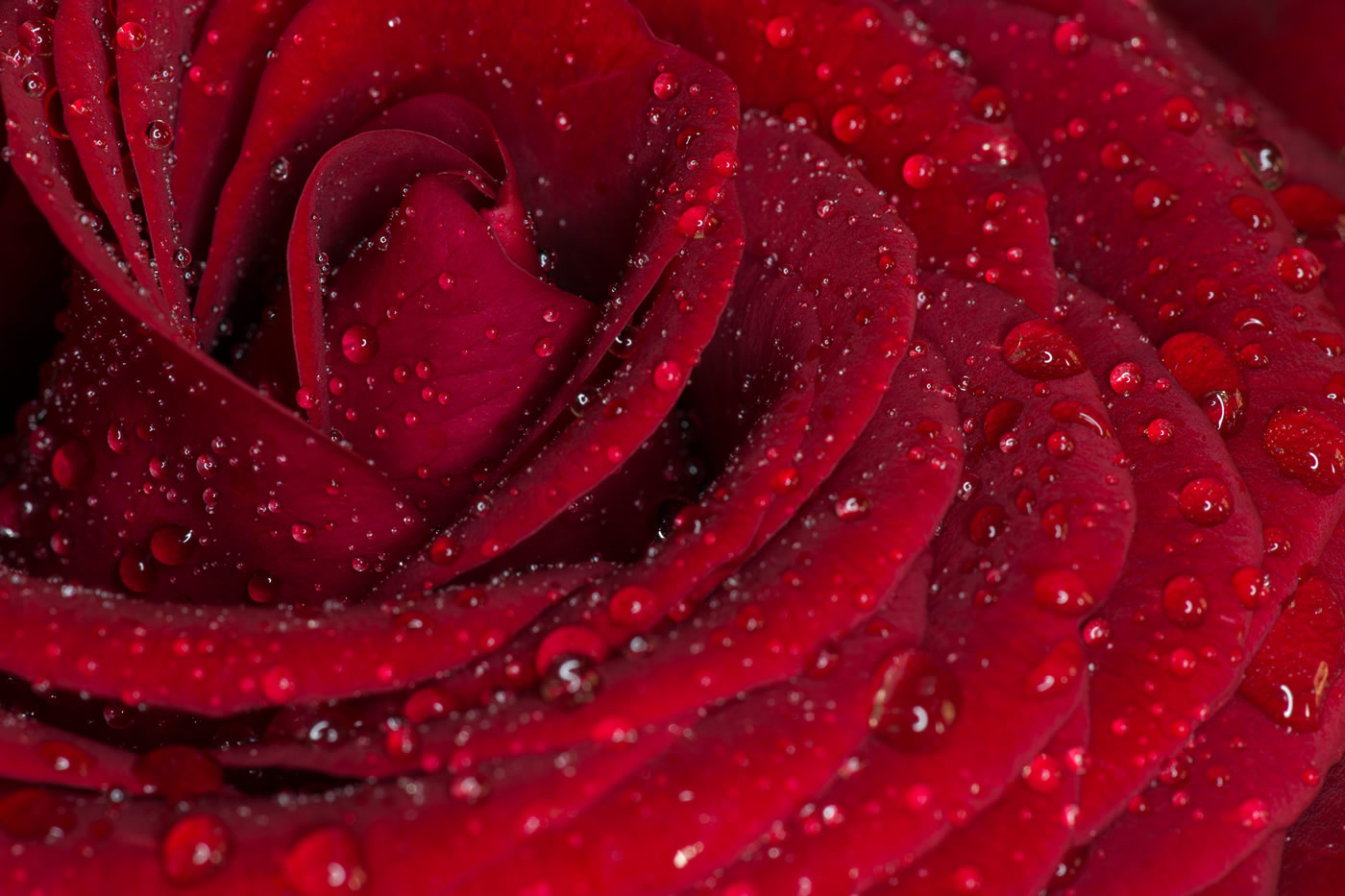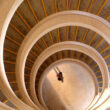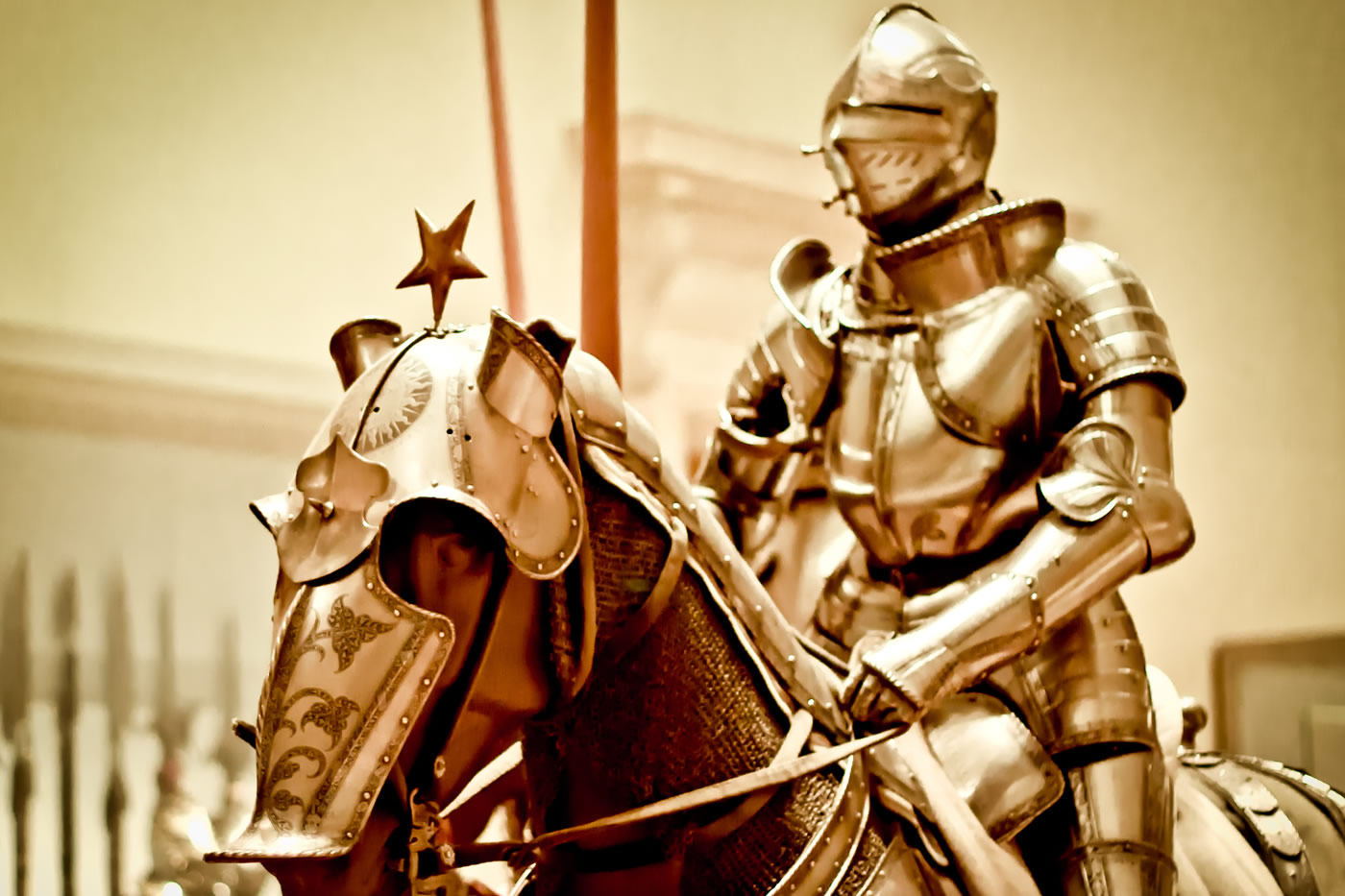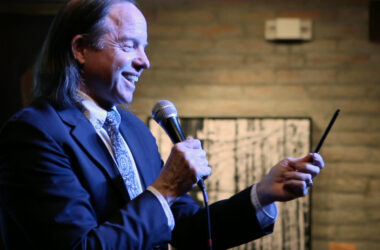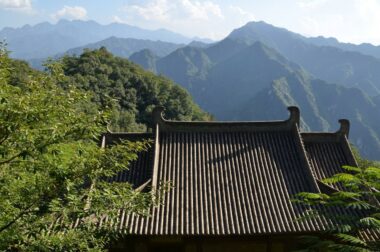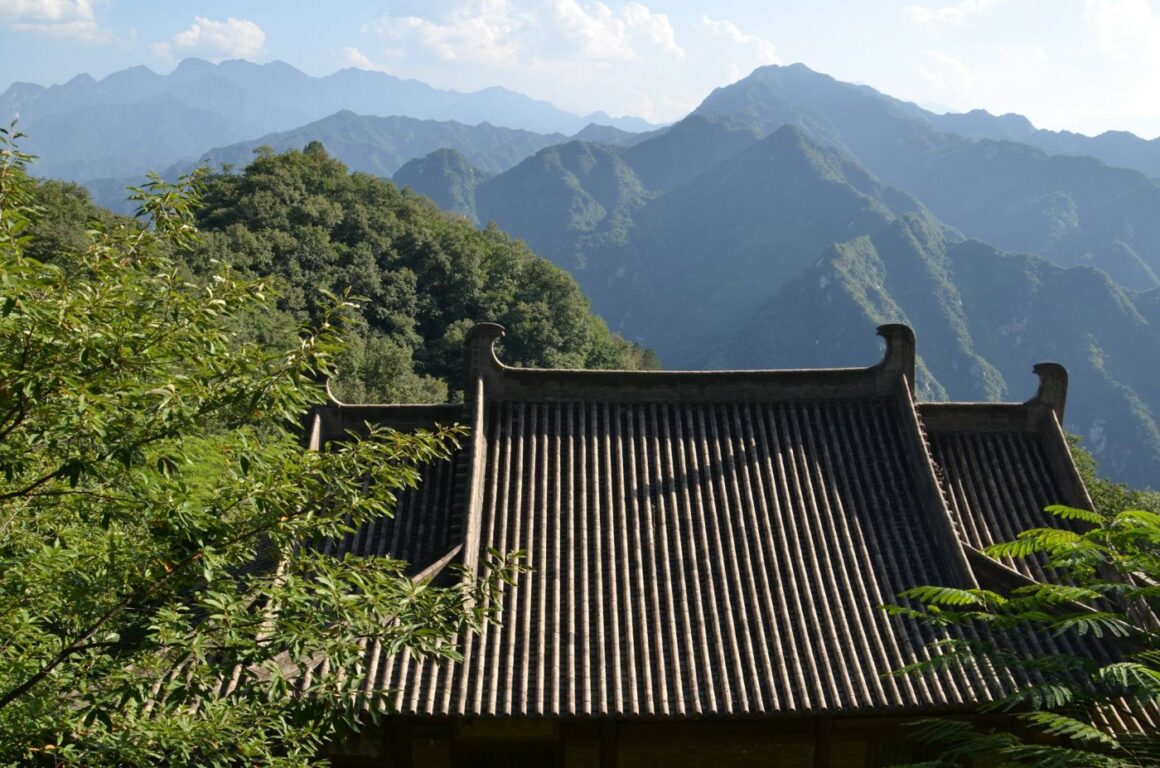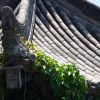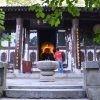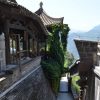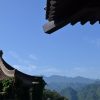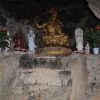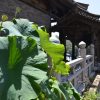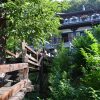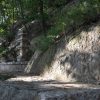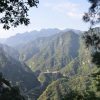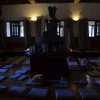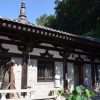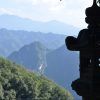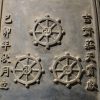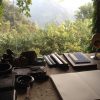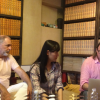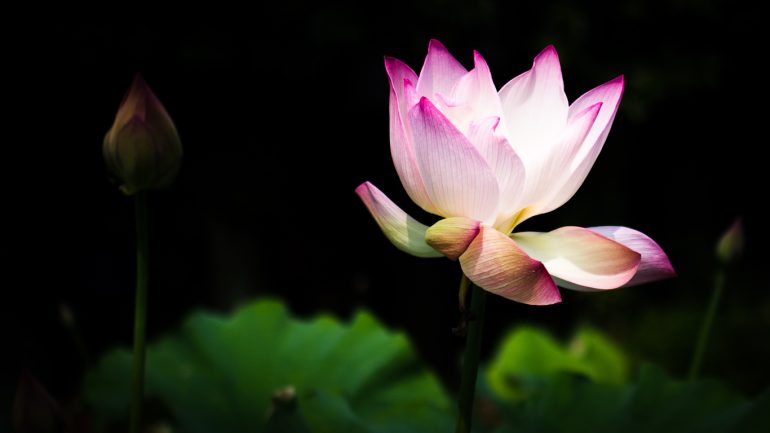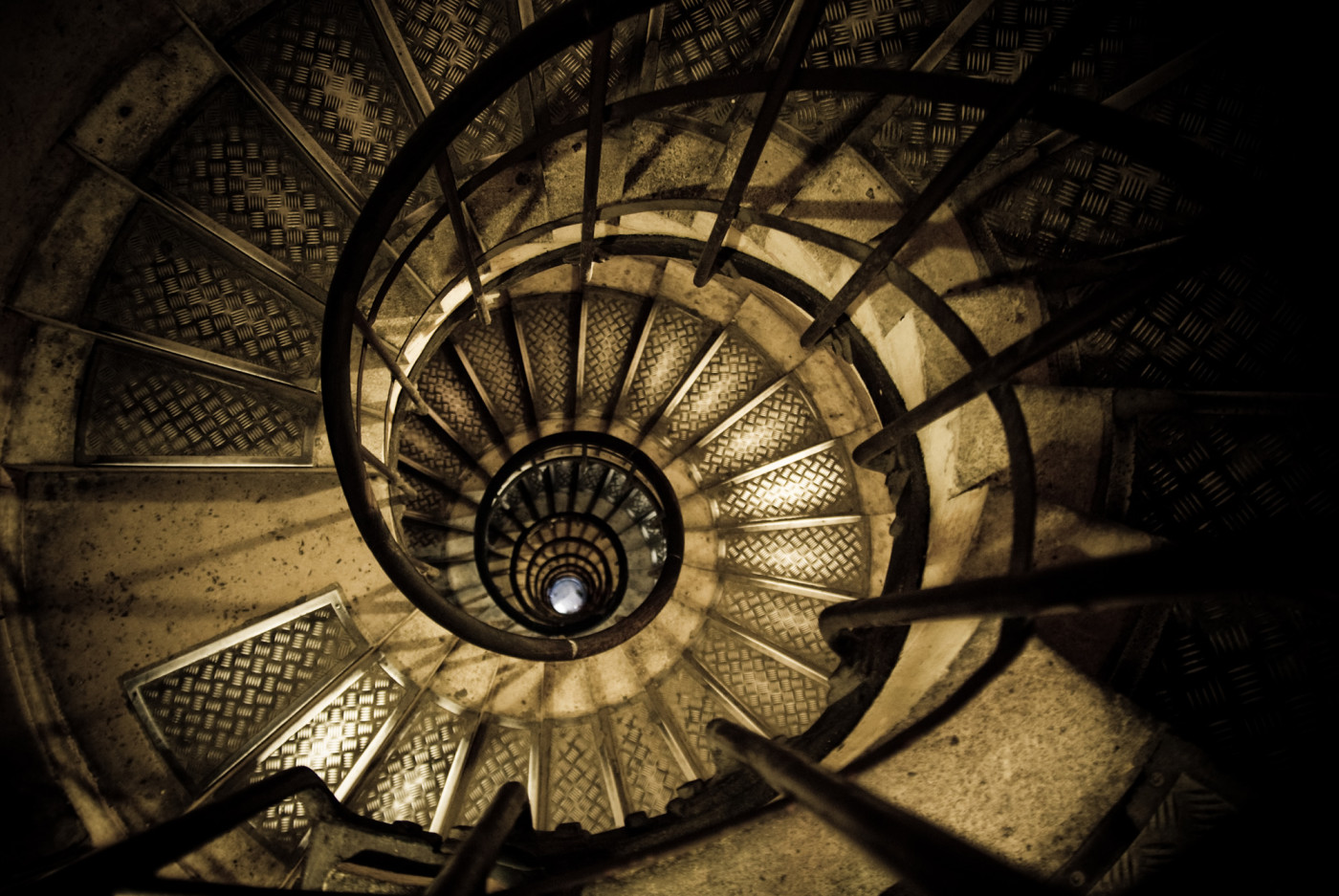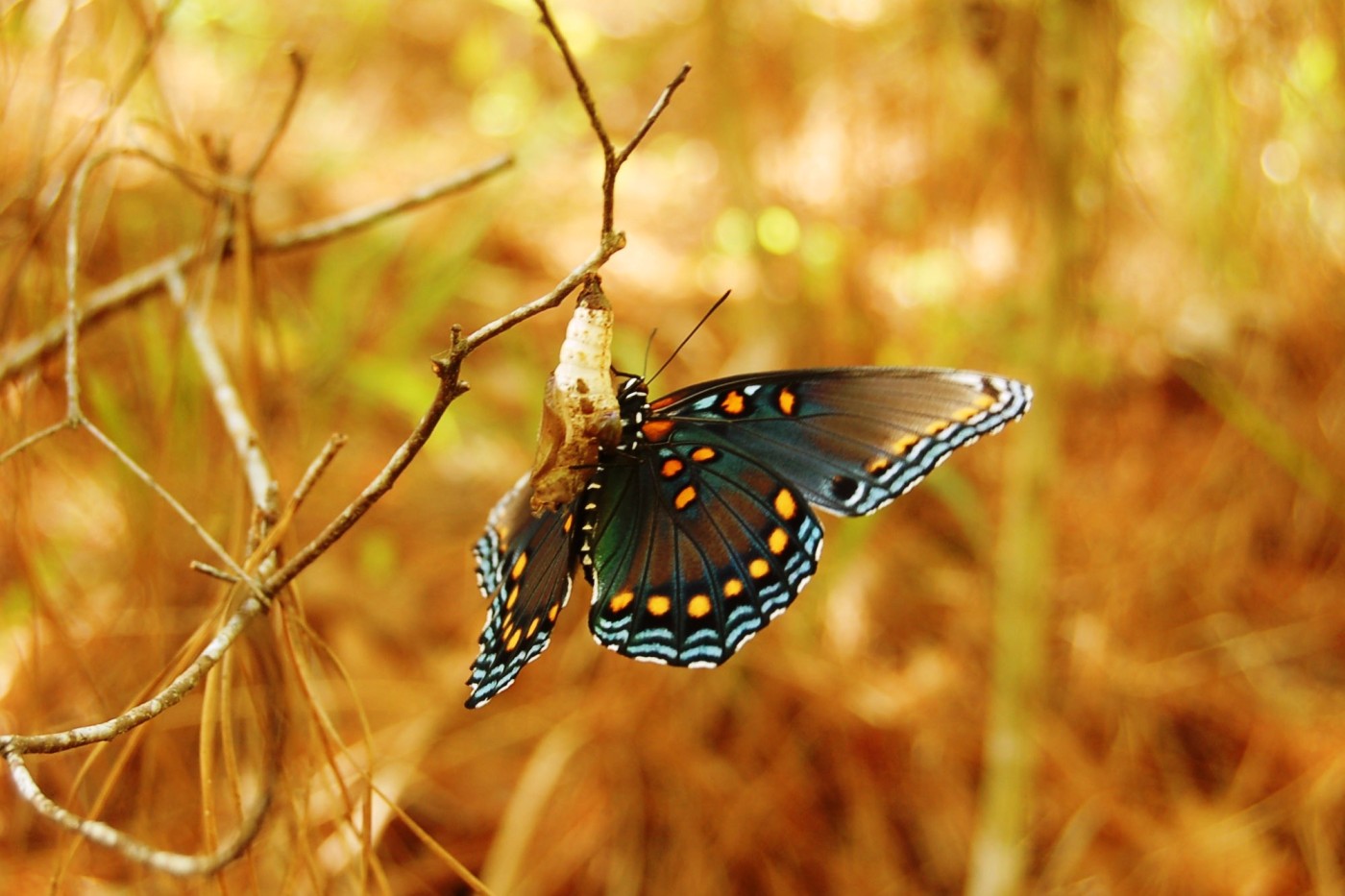Audio
On a recent trip to Xi'an, China Geshe Michael and a small group of people were invited to climb to the top of Zhongnan Mountain and take a tour of the very beautiful Clear Karma Temple being restored there. This mountain range is famous for being the place where where Taoist sage Laozi is said to have dwelt and conveyed the Dao De Jing.
This mountain range is famous for being the place where where Taoist sage Laozi is said to have dwelt and conveyed the Dao De Jing.
These Zhongnan Mountains have played a significant role in the local development of both Buddhism and Taoism. Buddhism was introduced to Chang'an (today's Xi'an) during the Han Dynasty (206 – 220 AD). This was a central stronghold for the expansion Buddhism until the end of Tang Dynasty (618 – 907). Over the years the number of Buddhist temples mushroomed in this area and included many of the most famous temples in China.
While at the top and in the teaching hall of this temple Geshe Michael gave a teaching on Master Kamilashila's commentary to The Diamond Cutter Sutra.
Below are some pictures of this beautiful mountain temple in order to set the scene:
There are two famous commentaries to The Diamond Cutter Sutra that were written in Sanskrit in India.
This one by Master Kamalashila is one of them and was written around 750 A.D., the other was done by by Master Vasubandhu around 350 A.D.
Here's what Geshe Michael had to say about the two surviving Sanskrit commentaries:
"We have two left — one by Kamalashila, who lived around 750 C.E., and the other by Vasubandhu, who lived some four hundred years before. Kamalashila's claim to fame was that he taught King Trisong Detsun of Tibet how to meditate properly by defeating the incorrect teaching of a Chinese monk in debate."
"Kamalashila's commentary is an intense treatise that uses the Sutra to explain some very difficult positions held by one of the five philosophical schools of Buddhism."
Master Kamalashila was the renowned 8th century Indian scholar and abbot of Nalanda University
who was invited to teach in Tibet, and is probably best known for his classic text about meditation called The Steps of Meditation (Bhavanakrama in Sanskrit, Gompay Rimpa in Tibetan). Many of you know Master Kamalshila because this famous text forms the basis for much of ACI Course 3 on Meditation. To view that course, please follow the link below:
ACI Course 03: Applied Meditation
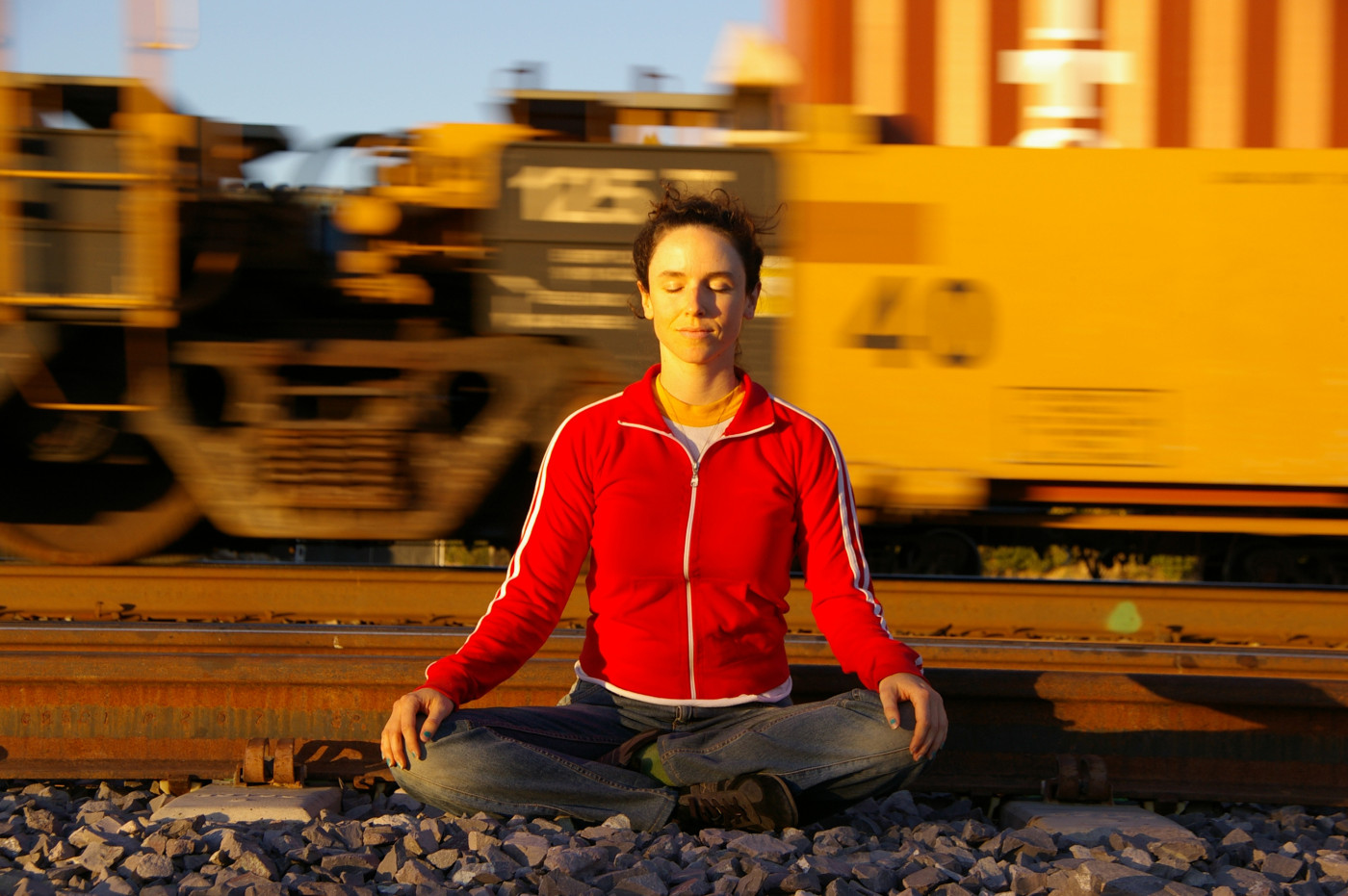
This Course is a must for anyone who wishes to practice meditation effectively. It is based upon The Stages of Meditation (Bhavana Krama) by Master Kamalashila (750 AD), and presentations by Je Tsongkapa and Pabongka Rinpoche.
The only known Tibetan commentary to The Diamond Cutter Sutra is called Sunlight on the Path to Freedom and was written by Chone Drakpa Shedrup (1675-1748). ACI Course 6 on The Diamond Cutter Sutra was based on this commentary. Chone Lama in turn based a lot of his commentary on Master Kamalashila's earlier text written almost 1,000 years before.
To further your study of The Diamond Cutter and study Chone Lama's commentary, please follow the links below:
ACI Course 06: The Diamond Cutter Sutra (1996, California, Geshe Michael Roach)
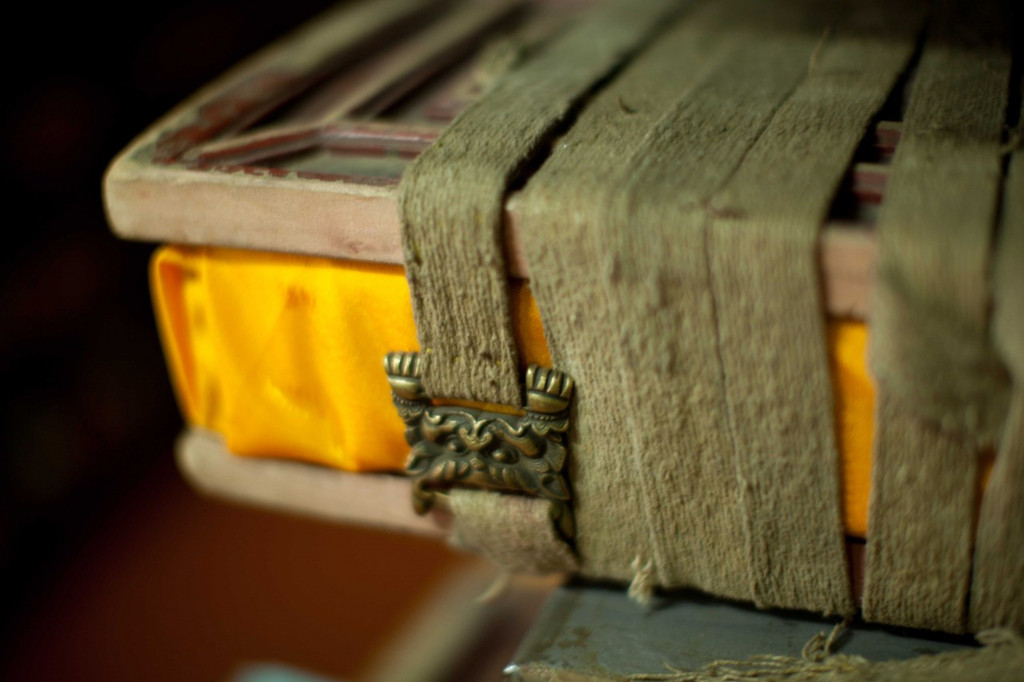
This Course is based upon the Diamond Cutter Sutra (Vajrachedika) by Shakyamuni Buddha, along with the only known native Tibetan commentary, by Chone Lama Drakpa Shedrup (1675-1748).
ACI Course 06: The Diamond Cutter Sutra (2000, Bodhgaya, Geshe Michael Roach)

This Course is based upon the Diamond Cutter Sutra (Vajrachedika) by Shakyamuni Buddha, along with the only known native Tibetan commentary, by Chone Lama Drakpa Shedrup (1675-1748).
Just as an aside and an interesting bit of history, Master Kamalashila was requested by the Tibetan king Trisong Detsen to come to Tibet to participate in the historic debate at Samye Monastery with a Chinese monk.
The monk, named Mo-ho-yen, was teaching that meditation consisted of emptying your mind and thinking about nothing at all. This is actually a non-Buddhist meditation which leads to certain apparently desirable results which are really very bad in the end. Master Kamalashila was teaching the opposite: he said that meditation is only an instrument or a tool, a microscope for focusing the mind upon a meaningful object. He won the debate and then wrote The Steps of Meditation to further clarify how meditation should properly be done.
I thought many of you might like some more detail about that historic debate, so I dug up the following translation from our archives:
The following translation is an excerpt from a historical account of how Buddhism reached Tibet, written by Buton Rinpoche. It is commonly referred to as "Buton Chunjung", or "Buton's History of Buddhism." Only pieces of this account relevant to the debate have been selected and translated—the asterisk marks in between some of the paragraphs indicate that there is additional text in-between the passages translated.
Then, at the age of 13, Trisong Detsen ascended to the throne.
People told him about the life of his father, and his father's father before him. When he heard the parts about how they had practiced the Dharma, he went and recovered the scriptures that had been hidden, and requested people to teach them to him. With this, great faith was born in him.
After that, Yeshe Wangpo was sent to ask the Bodhisattva Master to come to Tibet.
[Note: The Bodhisattva Master is Master Shantarakshita.]
The Tibetans reported that they had found the Master to be a pure person, someone they need have no doubt about. And so he was invited to the court. With the Kashmiri named Ananta serving as translator, he began teaching in the Lungtsup Palace. He spent four months there, giving discourses to the Tibetans upon the ten virtues, the eighteen categories, and the twelve links of dependent origination.
The various local deities and demons of Tibet were enraged by this teaching. They sent floods that swept over the pastures and plains, and great sandstorms that struck like lightning and reached to the tops of the mountains. Epidemics spread through the population, and sicknesses attacked the livestock as well. The people of the land rose up in protest, saying "This is all due to that Dharma teaching that's been going on!" And so they expelled the Master, forcing him to travel to Nepal.
Much later, Ba Selnang was dispatched to China, in search of Dharma teachings. A party of 30 different people, including Sangshi and others, were sent to ask the Master to return.
The Master came to Drakmar Drinsang and met the King. He said to him,
These local spirits and demons remain unsubdued; they will never allow you all to practice the Dharma, and they are taking advantage of the fact that Your Highness is so young. But there is someone I know who would be able to control them. He is a master by the name of Padmasambhava, and he possesses great mystic power. You must invite him to help us.
The King then affirmed that the same message had been given to him in a dream. And so he selected two representatives—Selnang, nobleman of Bamang, and Sengong Hlalung. As assistants for them he chose five more men: Nanam Dorje Dujom, Che Jnyana Siddhi, Chim Shakya Prabha, Drangti Jaya Rakshita, and Shupu Pelgyi Senge. Master Padmasambhava saw this from afar, and traveled up to Gungtang in Mangyul to meet them.
Over time then he was able to capture the evil spirits and demons, and imprison them. From there he traveled to the Hei Mountains, where he met the King. He went then to Meldroy Pur, and was able to capture and incarcerate all the remaining evil spirits and demons of Tibet.
After that, Master Padmasambhava was invited to Samye, where he performed a consecration ceremony for the land. The Master Bodhisattva, Shantarakshita, then came and examined the land to see what kind of buildings should be erected. They decided to take as their model the great temple of Otantapuri, in India: the central mountain, twelve continents, the pair of sun and moon combined, and then all round the circling mountains of iron. They laid the foundation stone in the fire female year of the hare [probably 667 AD].
First they built the House of Aryapalo; all the holy images there were constructed using Tibetans as models. The elder queen, Tsepong Samar Gyal Metok Drolma, had the Bronze House of the Three Realms built. The queen Poyong Sa Gyalmo had the Golden House of the Middle Gardens built. And Drosa Jangchub Men built the House of a Billion Spreading Virtues.
The work was completed in the female earth rabbit year [probably 679 AD], and then the se two—the Bodhisattva Master and Master Padma sambhava — conducted the consecration ceremony together. A celebration was held that continued for 13 years, and then in the sheep year[probably 695] 12 monks from the "Group that Professes All Things" were invited. They ordained a trial group of seven Tibetans, to see whether the Tibetans would be able to maintain their vows or not. These seven were known as "The Trial Seven."
If we look at the ordination names that these seven were given, it becomes clear that their vow master was the Bodhisattva, since his own name was Shantarakshita. The lineage of vow masters in this case is found on the murals that adorn the walls of Samye: Shariputra, Rahula, Nagarjuna, Bhavaviveka, Shrigupta, Jnyanagarbha, and then Vowmaster Bodhisattva.
Then Master Padmasambhava performed many great feats, such as transforming the desert sands of Ngamshu into green pastures, and directing the Tsangpo River through pipes. The King had a silver pitcher that he used to store his water for bathing; the Master tossed it up into the air, and it came down filled with the water of the gods, with a color like milk. He offered the water then to the King to wash his hair. The ministers of the King were displeased, but the King expelled them from the palace.
Moreover he made master translators out of a great number of people, including the Indian masters Vimalamitra, Buddhaguhya, Shantigarbha, and Vishuddha Singha; as well as Tibetans such as the Trial Seven, Chukyi Nangwa, Bandhe Namka, Dro Rinchen De, Nampar Mitokpa, and Shakya-U. They then translated a great number of scriptures.
They invited a tantric master named Dharmakirti, and he imparted to them the teachings on yoga, such as the empowerment into the secret world of the Diamond Realm. This was going on at the House of Demon-Smashing Tantrikas. At the House Filled with Wonderful Laws, people such as the Kashmiri pandit Jinamitra, and Danashila, were presiding over the service of justice.
The Chinese master Hwashang, and others, were over at the House of Unshakable Meditation working on meditation techniques; and composition was being taught at the House of Faultless Composition.
The finances of the monastery were carried on in the central depository at the House of Pehar. And at the House of Vairochana they were giving teachings on the Dharma and so on, working to spread the entire Buddha Dharma.
By the year of the dragon [probably 704], the great Translators of the Teaching named Bandhe Peltsek and Bandhe Luy Wangpo—along with others—were at the Dengkar Palace, trying to organize the titles, and numbers of volumes and verses, of all the texts that had been translated up to that time in our country of Tibet. These they wrote down in a master catalog.
After that, the Master Bodhisattva, Shantarakshita, made the following prediction:
The teachings of the non-Buddhists will never rise here in Tibet. But the Buddhist teaching itself will split into two groups, which will struggle against each other. When this begins to happen, you must invite my disciple, Kamalashila, from India. Arrange for a debate to take place, and then the arguing will be settled, on the side of the Dharma.
Shortly thereafter he passed into the realm of peace, having been crushed under the hooves of a horse. Pelyang was appointed as the next Master, and he began to teach the Dharma. Yeshe Wangpo avoided this, and went into meditation at Hlodrak. The disciples of the Chinese master named Hwashang Mahayana began to increase. They would not engage in virtuous practices, for they were attracted to a nihilistic view: they would say, "You can't get enlightened by doing good deeds—by acting and speaking in accord with the Dharma. The way to get enlightened is to abide in complete inaction."
The majority of Tibetans were attracted to this idea, and began to study this new system. A few people, like Pelyang and Bharatna, continued to practice the system of the Master Bodhisattva, Shantarakshita. People began to disagree both in their worldview and in their activities, and a struggle broke out.
The King issued a proclamation that everyone should maintain both the worldview and way of life that the Master Bodhisattva had taught. This angered the Immediatists, who armed themselves with swords and declared that they would murder all the Gradualists. The King was distressed by this, and dispatched messengers to call Yeshe Wangpo to him. Two times they went, and were unable to convince the Master that he should come. The King sent them then a third time, with instructions to execute Yeshe Wangpo if he refused further.
[Note: There are two special Chinese words here, “Tunmunpa” and “Tsenminpa,” which the Tibetans incorporated into their language. “Tunmun” means “immediate” or “all at once,” and so a “Tunmunpa” or “Immediatist” refers to someone who was following the philosophical system that Hwashang Mahayana was propagating. “Tsenmin” means “gradual,” and so a “Tsenminpa” or “Gradualist” refers to someone who was following the philosophical system that the Bodhisattva taught.]
The messengers came to Master Yeshe Wangpo's cave; it was a deep hole in the rock, where you had to let yourself down on a rope over 60 feet long. They asked him to come, and the Master saw that if he didn't go, they would kill him, and it would be the same as committing suicide.
And so he did come to the King, and said: "Your Highness, there is no need for you to have sent for me. You have to think of the Vow Master's last words." And the King was thus reminded, and he sent messengers out to invite Master Kamalashila to the court.
When Hwashang got word of this plan, he ordered copies of The Extensive Mother and other such profound sutras, in order to prepare his case. He was teaching that "There is no need to devote yourselves to studying the classical Buddhist commentaries; all you need to do is lie down and sleep." He composed The Wheel of the Meditation of Sleep; as well as two additional works—The Examination of Meditation and A Re-Examination of Meditation—in defense of The Wheel.
In order to prove his points through reasoning, he used The Bookcover for Views, and to prove them with scriptural authority he used as his sources some 80 different sutras. When he found that The Commentary on the True Intent of My Sutras contradicted both his views and his way of life, he wrapped it up in some old boot-soles.
[Note: “The Commentary on the True Intent of My Sutras” is an important work by Lord Buddha about emptiness.]
During this time, Yeshe Wangpo stayed with the King, and asked him to listen to what the real beliefs of the Vow Master were. The King was greatly pleased by them, and declared, "Now you are my Master!"
When Kamalashila arrived, the King sat himself above everyone, and then he placed Hwashang in the right row, and the Master in the left row with all the Gradualists behind him.
The King placed a garland of flowers into both of their hands, and announced his command: "You two debate, and the loser must give his flower garland to whoever wins. And whoever loses will not be allowed to stay in this place."
Hwashang began the debate, claiming: "If someone does either good or bad deeds, they either go to the higher births or to the lower realms, respectively. Therefore they are not freed from the cycle of pain, and so these deeds are an obstacle to reaching enlightenment. For instance, whether a cloud is black or white, it nevertheless obscures the sky. Collecting bad or good karma is the same.
"Anyone who has nothing in their mind at all, who has not thought about anything at all, will be completely freed from the cycle of pain. What the term 'not seeing' refers to is not thinking about anything, not conceptualizing anything, not analyzing anything at all. Therefore, entering instantaneously is just the same as the tenth bodhisattva level."
Then Master Kamalashila spoke, saying: "What you call 'not thinking about anything at all' is rejecting the wisdom of analysis. And because this wisdom of analysis is the foundation of totally pure wisdom, by rejecting it you are rejecting transcendent wisdom. Without the wisdom of analysis, no kind of yogi could ever abide in the non-conceptual state.
"If you don't recall anything, and if you don't bring anything to mind, then you are unable to recall any experiences, or have any new experiences. And, if you are thinking to yourself, 'I am not going to think of a thing,' then you will be strongly recalling that, and bringing it to mind. So if we're considering the mere absence of recollection, then whenever you faint or pass out, you'd be in a type of non-conceptual meditation. There is no possible way you could ever enter into a non-conceptual state without using correct analysis.
"You might be able to simply stop recalling anything, but without correct analysis, how would we be able to perceive the lack of a self-nature to all things? And without seeing emptiness, you could never eliminate your obstacles.
"Therefore, yours is a pure wisdom that perpetuates mistaken appearances. And thus your way of trying to think about not thinking about anything is incorrect. By neither recalling nor bringing things to mind, how will you ever recall your previous lives, or bring to your omniscient mind all existing things—how will you even get rid of your mental afflictions? "And so, the yogi who directly perceives the object using the wisdom of purity forever puts to rest their mistaken conceptions, by perceiving that all three times, and every inner and outer object, are empty. By relying on this he eliminates all of his wrong worldviews, making him a master in both method and wisdom. And this helps him clear away every obstacle, until he gains every perfect quality of a Buddha."
Then the King announced that all their followers must also comment upon the debate.
And so then Pelyang said: "There is the method followed by the Chinese, of entering instantaneously, and there is the method of purifying ourselves in stages. Now it has been stated that the six perfections are named with regard to their opposites. Giving is called 'giving' due to the tendency to hoard things for ourselves. And so if we abandon all forms of hoarding things for ourselves, we reach the highest giving. And we can apply this in the same way, all the way up to wisdom.
"For a long time after the Teacher[Lord Buddha] passed, disagreements about worldview did not exist. After that came three schools of the Middle Way who disagreed. Tunmun means entering immediately: we come into it by not seeking anything, and not realizing. The point of enry is different but the goal and the enlightenment are the same."
Then Yeshe Wangpo spoke at length, giving arguments such as: "We must investigate both entering immediately and entering gradually. According to those who hold to entering in stages, you do not need a cause for things, and therefore you are different than us. If you can enter immediately, then what are you doing here now? And then what is the problem with saying we are not already Buddhas from the very beginning?
"When we climb up a mountain, we must ascend step by step; we can't travel all the way up with only one step. It is the same way here. If reaching even the first bodhisattva level is so difficult, need we even mention omniscience?
"According to our own Gradualist system, once we have inundated ourselves in all the sacred teachings by means of the three wisdoms, then we can unmistakably grasp their meaning. And by training ourselves in the ten virtuous activities,we will become skilled at them,and will reach mastery. Then entering onto the first bodhisattva level will be no problem. And once we have become adept in all ten levels, we complete the two collections, and we become enlightened.
[Note: the “three wisdoms” here refer to the three of listening, contemplating, and meditating, or “tu sam gom.”]
"If we do as you say, we will not complete these collections; we couldn't even train our minds in worldly things. And if that is the case, how would we ever come to know all things? If we lie around without doing anything at all, without even eating food, how on earth will we achieve enlightenment, if we die from hunger!
"If you don't examine or check into where you are stepping, then you will fall off a cliff; and then how will you ever realize suchness?"
The Immediatists were unable to respond, and so they accepted defeat, and presented the garland of flowers to the Master. At this point they cried out with woe, wailing: "They have smashed us with the bricks of our own foundation, and we have perished!"
The King then announced: "Henceforth our worldview shall be the system of Nagarjuna. And our activities shall be to train ourselves in the ten virtuous deeds and the perfections. Following the Immediate system is now forbidden."
Then Hwashang was banished from the country and sent back to China, and all his texts were gathered together and hidden away.

